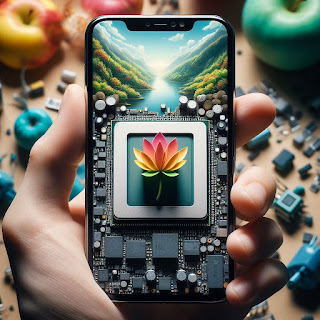In the competitive landscape of mobile processors, two giants stand at the forefront – Qualcomm's Snapdragon and Apple's A-Series chips. As the brains behind our smartphones, these processors play a pivotal role in determining the overall performance and user experience. This performance shootout will delve into the key aspects of Snapdragon and Apple A-Series chips, providing insights into how they stack up against each other in the ever-evolving world of mobile technology.
Architecture and Manufacturing Process
Snapdragon: Powerhouse by Qualcomm
Qualcomm's Snapdragon processors often feature a diverse range of architectures, with different models catering to various market segments. The company collaborates with different foundries for manufacturing, with notable recent models utilizing a 5nm process. The Snapdragon chips are renowned for their versatility, powering a wide array of Android devices.
Apple A-Series: Silicon Mastery
Apple's A-Series chips, on the other hand, are designed in-house, allowing for tight integration with iOS devices. Apple has consistently pushed the envelope with its chip technology, employing cutting-edge manufacturing processes. The latest A-Series chips, such as the A15 Bionic, boast a 5nm architecture, showcasing Apple's commitment to efficiency and performance.
Performance and Benchmark Scores
Snapdragon: Tailored for Android Diversity
Snapdragon processors are the go-to choice for a plethora of Android devices, ranging from budget-friendly smartphones to flagship powerhouses. The performance of Snapdragon chips is often reflected in benchmark scores, showcasing their ability to handle multitasking, gaming, and resource-intensive applications seamlessly. Adreno GPUs, integrated into many Snapdragon models, contribute to impressive graphics performance.
Apple A-Series: Benchmark Dominance
Apple's A-Series chips consistently outperform many competitors in benchmark tests. The A15 Bionic, featured in the latest iPhone models, demonstrates Apple's prowess in optimizing hardware and software for unparalleled performance. The integration of Apple-designed GPUs and Neural Engines enhances not only raw processing power but also the efficiency of tasks like AI and machine learning.
Graphics and Gaming Capabilities
Snapdragon: Adreno Graphics Prowess
Snapdragon processors often incorporate Adreno GPUs, known for their strong graphics performance. This makes Snapdragon-powered devices well-suited for mobile gaming, delivering smooth frame rates and realistic visuals. The Adreno GPUs are designed to handle demanding gaming applications with ease, providing an immersive experience for users.
Apple A-Series: Metal API and Stellar Gaming Experience
Apple's A-Series chips leverage Metal, a low-level graphics API, optimizing gaming performance on iOS devices. This, combined with powerful GPU architectures, ensures that Apple devices offer a stellar gaming experience. The A15 Bionic, for instance, enhances gaming graphics and supports features like ray tracing for a more immersive gameplay environment.
AI and Machine Learning Capabilities
Snapdragon: AI-Driven Innovations
Snapdragon processors integrate Hexagon DSPs and AI engines, enabling a range of AI-driven features. From enhanced camera capabilities to efficient voice recognition, Snapdragon-powered devices leverage AI to improve user experiences across various applications. The Snapdragon AI platform is designed to handle complex machine learning tasks with efficiency.
Apple A-Series: Neural Engine Mastery
Apple's A-Series chips are at the forefront of AI and machine learning advancements in mobile devices. The Neural Engine, integrated into recent A-Series chips, accelerates machine learning tasks, contributing to faster facial recognition, improved photography, and overall system optimization. Apple's commitment to AI integration is evident in the seamless and intelligent features present in iOS devices.
Connectivity and 5G Integration
Snapdragon: 5G Pioneers
Qualcomm's Snapdragon processors have been instrumental in driving the adoption of 5G technology across a wide range of smartphones. Snapdragon chips often integrate 5G modems, delivering faster data speeds and improved network connectivity. This has contributed to the widespread availability of 5G in Android devices powered by Snapdragon processors.
Apple A-Series: Embracing 5G Evolution
Apple, with the introduction of the iPhone 12 series, embraced the era of 5G connectivity by integrating 5G modems into its A-Series chips. The A15 Bionic continues this trend, ensuring that Apple devices provide users with access to the latest advancements in wireless technology.
A Clash of Titans
In the performance shootout between Snapdragon and Apple A-Series processors, both prove to be formidable contenders, each excelling in its respective ecosystem. Snapdragon's versatility and widespread adoption in Android devices make it a powerhouse for diverse user needs. On the other hand, Apple's A-Series chips showcase the benefits of an integrated approach, delivering exceptional performance and efficiency in iOS devices.
The choice between Snapdragon and Apple A-Series ultimately depends on individual preferences, device requirements, and the preferred operating system. Whether you opt for the diverse Android landscape powered by Snapdragon or the seamless integration of hardware and software in Apple devices, both processors continue to push the boundaries of mobile technology, ensuring that users can experience the full potential of their smartphones.



